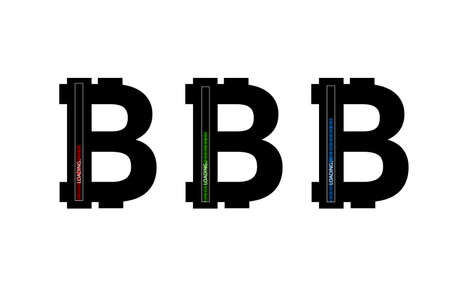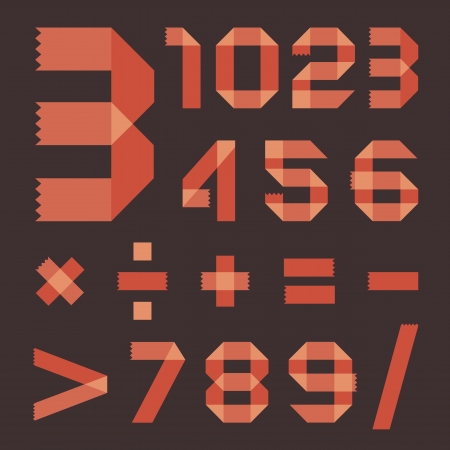Introduction to the I Ching
The I Ching, also known as the “Book of Changes,” is one of the oldest classics from ancient China, dating back over 3,000 years. At its core, the I Ching is a guide for navigating lifes challenges, providing insights into decision making and personal growth. Traditionally used by scholars, leaders, and everyday folks alike, this book offers wisdom through a series of symbolic hexagrams—each representing different life situations and their possible outcomes. While its roots are deeply Chinese, the I Chings timeless advice about change, balance, and harmony speaks to universal human experiences. In modern American society, where questions about justice and fairness are ever-present, it’s worth exploring how this ancient text might help us reflect on social issues and inspire thoughtful action today.
2. Understanding Social Justice in Modern America
Social justice is a big topic in the United States, and it shapes everything from public policy to everyday conversations. In simple terms, social justice means making sure everyone gets fair treatment and equal opportunities, no matter their race, gender, background, or beliefs. It’s about breaking down barriers that keep people from thriving and addressing historic inequalities that still affect many Americans today.
Key Values of Social Justice
| Core Value | Description |
|---|---|
| Equity | Ensuring resources and opportunities are distributed fairly, accounting for different needs and starting points. |
| Inclusion | Making sure all voices are heard and respected, especially those who have been marginalized. |
| Dignity | Treating every person with respect and recognizing their inherent worth. |
| Access | Removing barriers so everyone can participate fully in society—think education, healthcare, and voting rights. |
Current Struggles and Movements
The fight for social justice is ongoing in the U.S., with new challenges popping up as society changes. Some of the main areas where Americans focus their efforts include:
- Racial Justice: Addressing systemic racism through movements like Black Lives Matter, police reform advocacy, and education equity initiatives.
- Gender Equality: Supporting pay equity, reproductive rights, and LGBTQ+ inclusion.
- Economic Justice: Tackling issues such as the minimum wage, wealth inequality, affordable housing, and access to healthcare.
- Immigrant Rights: Advocating for fair immigration laws, DACA protections, and pathways to citizenship.
- Climate Justice: Linking environmental protection with social equity, recognizing that pollution and climate change often hit marginalized communities hardest.
While progress has definitely been made—think landmark Supreme Court rulings or new workplace policies—these struggles show that social justice is more a journey than a destination. Activists use grassroots organizing, legal challenges, public awareness campaigns, and even art to push for change. At its heart, modern American social justice is all about building a society where everyone has a fair shot at happiness and success—something that ties back nicely to the core ideas of the I Ching: balance, harmony, and transformation.

3. Drawing Parallels: I Ching Insights and American Social Justice
When we dive into the world of the I Ching, one thing that stands out is its focus on harmony, balance, and transformation. These concepts actually have a lot in common with the core values of social justice in America today. For example, the I Ching teaches about the importance of recognizing cycles of change and adapting with humility and openness—qualities that are essential in any movement for equality and fairness.
The Principle of Balance
At its heart, the I Ching revolves around yin and yang—the idea that life is made up of opposing forces that need to be balanced. In American social justice conversations, this is reflected in the push for equity and inclusion. The goal is to create a society where everyone has a fair shot, no matter their background. Just as the I Ching encourages seeking balance in all things, social justice advocates aim to rebalance systems that have historically favored some over others.
Change as a Constant
The I Ching reminds us that change is always happening—and that resisting it can lead to problems. This resonates with American history, where progress often comes through movements that challenge the status quo, like civil rights or gender equality efforts. The willingness to embrace change and rethink old structures is something both the I Ching and social justice movements hold dear.
Differences in Approach
However, there are also differences worth noting. The I Ching tends to focus on personal growth and self-cultivation, encouraging individuals to look inward before acting outwardly. American social justice movements, while valuing personal responsibility, often emphasize collective action—marches, protests, and community organizing—to achieve societal transformation. So while both share a vision for a better world, they sometimes take different routes to get there.
In short, exploring the overlap between I Ching philosophy and American social justice ideals shows us how ancient wisdom can still offer guidance today—even if it needs a little translation for our modern context!
4. Case Studies: Real-Life Applications
When we talk about I Ching and social justice in America, it might sound a bit abstract at first. But lets bring it down to earth with some real-life examples that show how ancient wisdom can inspire modern action.
Community Decision-Making
Imagine a grassroots organization in Chicago thats working to address food deserts in underserved neighborhoods. By applying the I Ching principle of “adapting to change,” leaders encourage open dialogue and flexibility as they collaborate with residents, local businesses, and government agencies. Instead of sticking rigidly to one plan, they adjust their approach as circumstances shift—just like the I Ching teaches us to read the energy of each moment.
Restorative Justice in Schools
In Oakland, some schools are turning away from zero-tolerance policies and exploring restorative justice circles. Here, the I Ching’s focus on harmony and balance (think Hexagram 11: Peace) inspires educators to seek reconciliation instead of punishment. The results? Fewer suspensions and more connected school communities.
Quick Comparison: Traditional vs. I Ching-Inspired Approaches
| Scenario | Traditional Approach | I Ching-Inspired Approach |
|---|---|---|
| School Discipline | Punitive, fixed rules | Dialogue-driven, adaptable solutions |
| Community Organizing | Top-down strategies | Responsive, collaborative planning |
| Conflict Resolution | Avoidance or escalation | Seeking balance and mutual understanding |
LGBTQ+ Advocacy: Embracing Change and Authenticity
The I Ching celebrates transformation—a concept that resonates deeply within American LGBTQ+ movements. Advocates often draw on themes of authenticity (Hexagram 1: Creative Force) and acceptance of evolving identities. For example, support groups may use guided reflection inspired by the I Ching to help members navigate personal transitions or advocate for inclusive policies in their workplaces.
Anecdote: Youth Empowerment Program in Seattle
A youth empowerment group in Seattle borrowed from the I Ching’s advice on thoughtful action before protest (Hexagram 43: Breakthrough). They encouraged teens to reflect on intentions and possible consequences before launching a campaign for climate justice—leading to more effective advocacy and stronger alliances with local leaders.
These stories show that while the language of the I Ching is old-school China, its spirit fits right into today’s American push for fairness, voice, and community healing. Sometimes all it takes is a fresh perspective—and maybe a hexagram or two—to spark meaningful change.
5. Critiques and Challenges
When we talk about using the I Ching for social justice in the U.S., it’s important to recognize some real challenges and critiques. First off, the I Ching comes from a totally different cultural and historical context—it’s an ancient Chinese text with deep roots in Eastern philosophy, and its original purpose wasn’t about fighting for equality or rights in a modern American sense. So, applying its teachings to today’s social justice movements can feel like trying to fit a square peg into a round hole. Some folks worry that using the I Ching in this way risks losing its true meaning, or worse, misrepresenting what it stands for.
Another big concern is cultural appropriation. There’s a fine line between appreciating another culture’s wisdom and cherry-picking pieces of it just because they seem trendy or useful. When Americans use the I Ching without understanding its background—or without respecting its spiritual significance—they might unintentionally disrespect the traditions behind it. This isn’t just about being “politically correct”; it’s about honoring the source and not treating it like a novelty or self-help trick.
On top of that, some critics point out that philosophical concepts from the I Ching—like balance, harmony, and change—can be pretty abstract when applied to real-world problems like systemic racism or economic inequality. While these ideas sound great on paper, they don’t always offer concrete steps for activism or policy change. And let’s be honest: American history is full of examples where well-meaning but vague advice didn’t lead to actual progress.
So, if we want to bring the I Ching into conversations about social justice here in the U.S., we need to do so thoughtfully and respectfully. That means learning about its origins, listening to voices from within Chinese communities, and making sure we’re not oversimplifying complex issues. By acknowledging these barriers, we can avoid turning a powerful cultural treasure into just another passing fad—and maybe even find new ways for different traditions to inspire positive change together.
6. The Path Forward: Integrating I Ching Wisdom
As we look to the future, the I Ching can serve as a powerful guide for individuals and communities striving for social justice in America. But how do we meaningfully integrate this ancient wisdom into our modern lives? Here are some actionable ways to respectfully draw inspiration from the I Ching in the pursuit of a fairer society.
Practice Reflection and Open Dialogue
The I Ching emphasizes self-reflection and thoughtful decision-making. Start by creating spaces—whether at home, work, or within your community—for open dialogue about injustice. Use I Ching readings not as fortune-telling, but as prompts to consider multiple perspectives and examine your own biases before taking action.
Embrace Change and Adaptability
One of the core lessons from the I Ching is that change is constant. In social justice work, this means being flexible and willing to adapt strategies as situations evolve. Encourage your community to regularly assess its efforts and be open to feedback, ensuring that actions remain relevant and effective.
Lead with Integrity and Humility
The I Ching reminds us that true leadership comes from integrity and humility. Whether you’re leading a grassroots movement or just starting conversations among friends, prioritize transparency, listen actively, and give credit where it’s due. This approach fosters trust and collective empowerment.
Engage Respectfully with Cultural Traditions
It’s essential to honor the origins of the I Ching. Approach its teachings with respect—learn about its history, avoid cultural appropriation, and consider collaborating with those who have deeper roots in its tradition. This ensures your engagement is both meaningful and ethical.
Create Rituals for Collective Intention
Gather your group for regular check-ins or intention-setting rituals inspired by the I Ching’s practices. These moments can help unify efforts, clarify shared goals, and keep everyone motivated on the path toward social justice.
By integrating these principles thoughtfully, the I Ching can become more than just an ancient text—it can inspire real change in modern American society. Let its wisdom guide you as you work toward building a more just world together.


